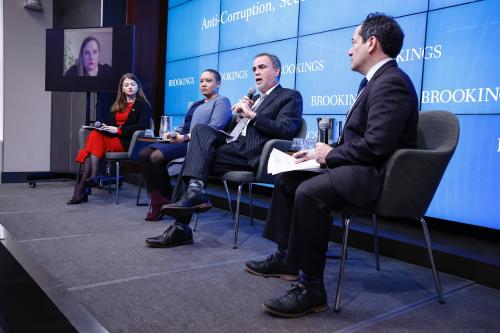Newspaper readers on Sept. 14 awoke to sobering headlines about Afghanistan. For some, they probably conjured up memories of Vietnam and the Tet offensive — as they were undoubtedly intended to.
An attack in inner-city Kabul by insurgents armed with small arms and rocket-propelled grenades killed several — but no Westerners or Afghan leaders — and resulted in the death of all the attackers within hours, primarily at the hands of Afghan security forces.
Yet headlines cited the attack as reason to doubt the North Atlantic Treaty Organization-U.S. plan for handing over more security responsibility to Afghans in coming years, and question how the attackers could have planned this without collusion from insiders within the government or Afghan security forces.
Nonsense. Rarely during this, admittedly, endless war have news outlets gotten the story so wrong. But they owe better analysis to their readers, as the nation confronts hard choices in the months ahead about its Afghanistan strategy, and as many Americans already have a pessimistic sense of the conflict’s current trajectory.
I am not suggesting that the media is systematically biased for or against U.S. military operations abroad. To be sure, journalists have reported bravely and insightfully from both Iraq and Afghanistan, living in tough conditions and showing great staying power themselves.
Yet the U.S. media does have tendencies to reach a certain level of malaise about the wars — and a certain distrust of government. This can make some collectively tend toward a more negative bent than the facts warrant.
It happened in Iraq in 2007. It could happen again if journalists and editors are not careful.
Indeed, the previous big story in The Washington Post about Afghanistan in recent days underscored the high desertion rates in the Afghan army and police. True, they are high—but they are lower than before, and they have not been so high as to prevent a continued growth and improvement in the caliber of the Afghan security forces. Again, balance and analytical perspective are necessary.
Consider the facts about what happened in Kabul on Sept. 13. Less than a dozen insurgents willing to fight to the death — and supported by infrastructure a few hundred kilometers away that was near and across the Pakistan border — moved weapons into a metropolis of five to six million people. The capital has multiple access points tough to control.
The weapons were all small enough to fit in the trunk of a car — AK-47s and rocket propelled grenades for the most part. Remember that many thousands of cars and trucks move in and out of Kabul every day. Even U.S. law enforcement and border patrol forces would be hard-pressed to stop such movement — as we prove every day in our inability to stop similar flows of U.S. weapons into Mexico and drugs into the U.S.. Car bombs, too, are hard to find absent painstaking vehicle-by-vehicle inspections.
Yes, those insurgents penetrated inner security barriers within Kabul — and one would, of course, hope that they would have been stopped earlier.
Undoubtedly, lessons can be learned about how to improve the Afghan — and sometimes NATO-run — checkpoints throughout the inner city. But even here, it is no small task to find small arms in a trunk or hidden within innocuous cargo.
The insurgents with their weapons, however, were not able to get truly close to their targets. They fired at the U.S. Embassy compound from almost a kilometer away, from a building under construction — the site where they met their demise just a few hours later.
Yes, they tragically killed brave, lightly armed Afghan police in the process. But there is an encouraging story here too—yet again, the Afghan forces stood and fought for their country.
Why didn’t that message come out of the stories? Indeed, Afghan security forces continue to suffer high casualties in this war. Still, they also continue to keep serving, and keep fighting in defense of their fellow citizens and their nation.
This was true as well in the springtime attack on the Intercontinental Hotel in Kabul. That could have been handled better, to be sure. But, on balance, it was handled reasonably effectively — and largely by Afghan forces.
On balance, Kabul is hardly safe. But it is also not particularly dangerous by the standards of strife-torn lands. In my experience, it is probably safer than Baghdad — and not notably worse than Islamabad or Mexico City or Cape Town.
It has been primarily the security responsibility of Afghan forces for years now — to the credit of those forces. Experiencing semi-spectacular attacks like Tuesday’s, at the rate of two to three a year, is hardly a failure for a country that remains at war.
There are plenty of things to worry about in Afghanistan. There are plenty of problems for enterprising journalists to dig up — and these correspondents continue to do us a collective service when they report accordingly, as is the norm.
But their power of the pen is so enormous, that when they get it wrong, it is important to hold them to account. That goes for all of us — including people in think tanks of course. The stakes are too high to allow otherwise.
As such my critique is specific and grounded in respect. But it is still important to voice.
The Brookings Institution is committed to quality, independence, and impact.
We are supported by a diverse array of funders. In line with our values and policies, each Brookings publication represents the sole views of its author(s).



Commentary
Op-edOn Afghanistan, Getting Story Right
September 15, 2011